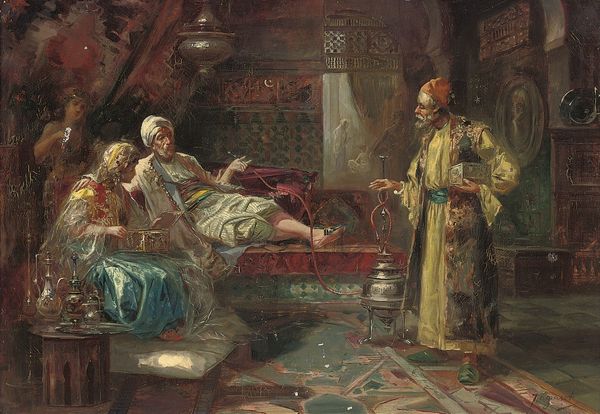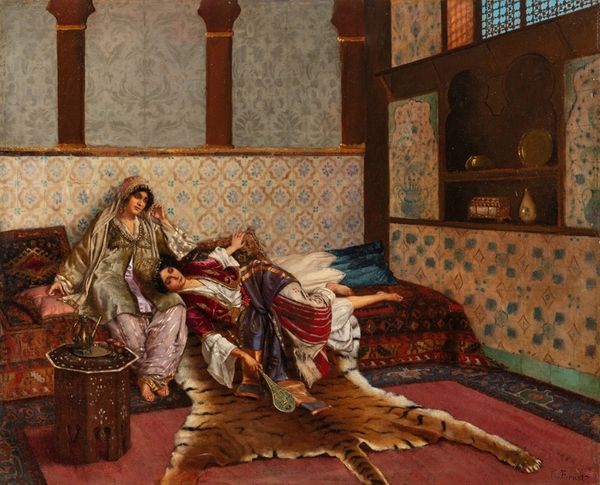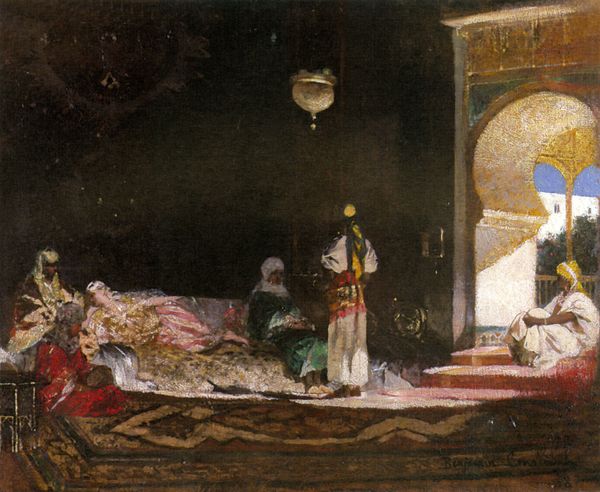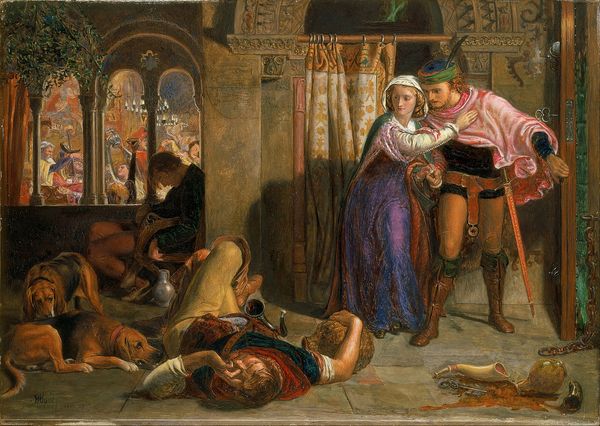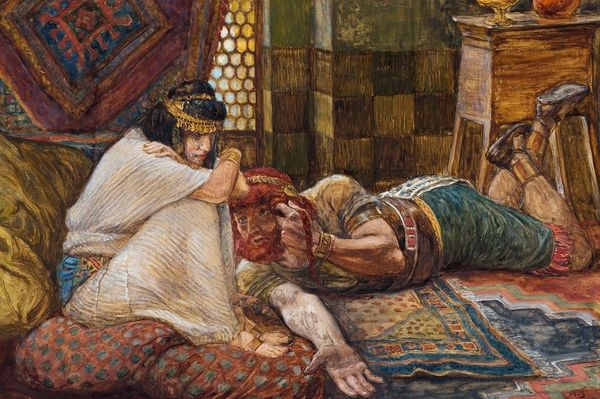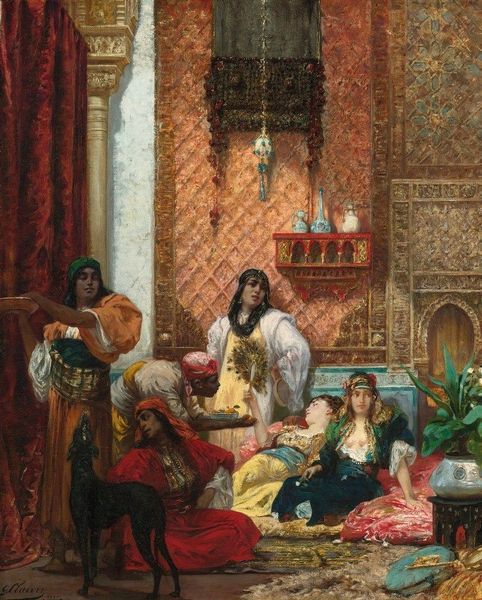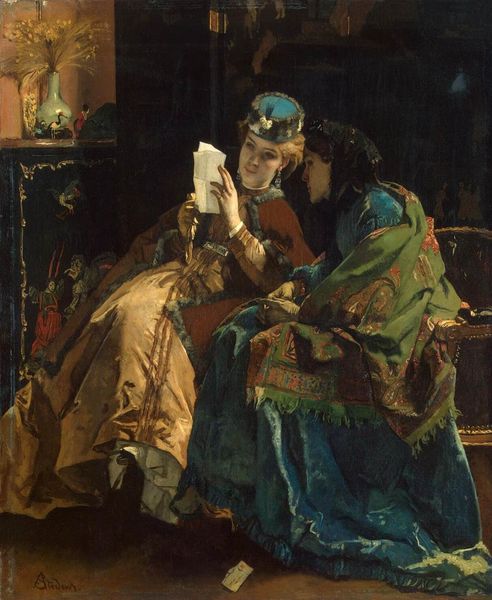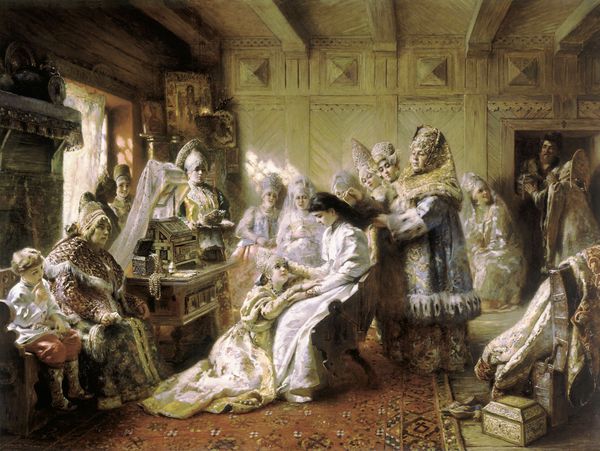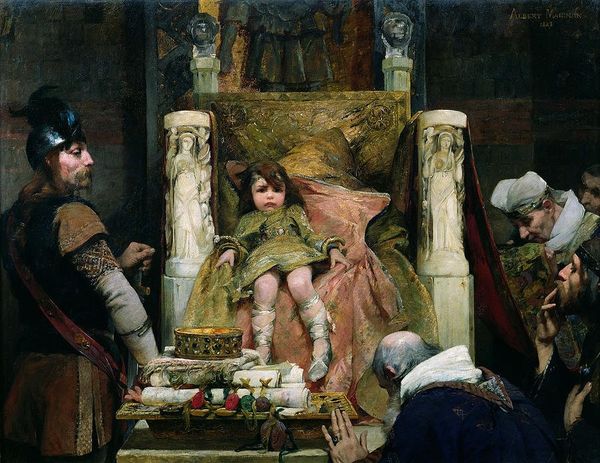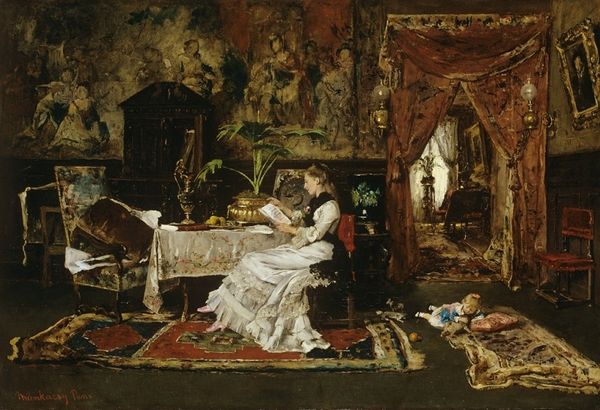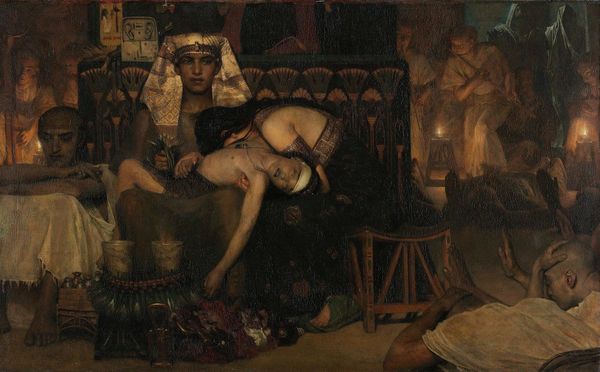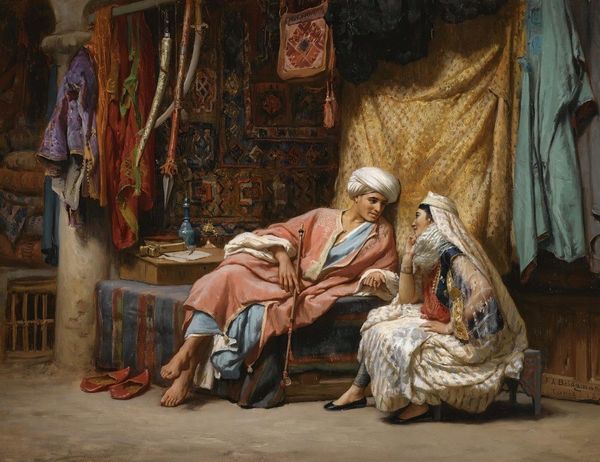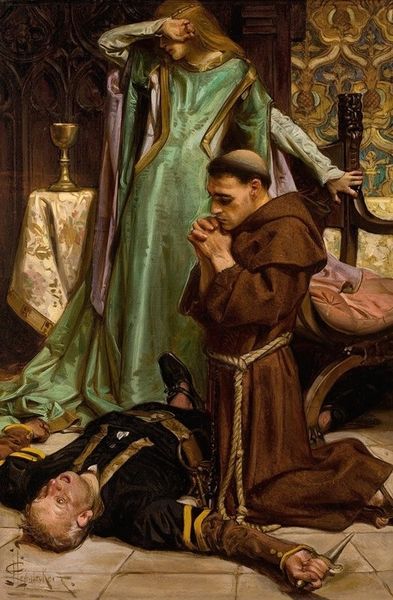
Ivan the Terrible and His Son Ivan on November 16, 1581 1885
0:00
0:00
Dimensions: 199.5 x 254 cm
Copyright: Public domain
Editor: This is Ilya Repin's *Ivan the Terrible and His Son Ivan on November 16, 1581*, created in 1885 using oil paints. It’s quite a visceral image, the crimson dominating the composition...it's really quite jarring. What stands out to you about its visual structure? Curator: Note how Repin utilizes a restricted palette – primarily dark reds, browns, and blacks. This intensifies the visual impact of the blood. Observe the dynamic tension created by the stark contrast between the horrified expression on Ivan the Terrible’s face and his son's pale visage, slack in death. How does this manipulation of color and line contribute to the painting's overall emotional effect, would you say? Editor: Well, the colour definitely draws my eyes directly to the blood and to their expressions! The artist's focus on such stark details definitely succeeds in eliciting a strong, shocked reaction. Is there a specific technique that you think amplifies this visual intensity? Curator: Consider the brushwork. Repin employs visible, almost frenzied strokes, particularly in rendering the carpet and the father’s garments. These rapid, broken strokes mirror the agitation of the scene, while contrasting with the smoother handling of the faces, thereby enhancing their emotional expressiveness. Note the diagonal composition as well - the figures and their arrangement - contributing to the destabilizing horror of this pivotal instant. How would you interpret the function and purpose of this piece, given that it exists separate of a real-time, lived moment? Editor: Seeing those frantic brushstrokes in contrast with the smooth skin tones helps convey how intense the depicted scene is. Looking closely has helped me appreciate how form is crucial to this painting. Thanks! Curator: Indeed. Appreciating how Repin's formal choices—his use of color, line, brushstroke, and composition—enhances one's perception of the artwork, doesn't it?
